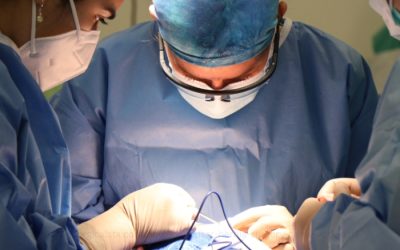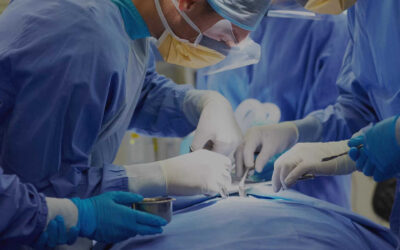The journey through cancer diagnosis, treatment, and recovery is undoubtedly challenging. Breast cancer is one of the leading health concerns for women worldwide. Its earliest understanding can be summarized by the concept of an abnormal growth of cells within the breast. Breast cancer, a term many of us are familiar with, is characterized by the abnormal proliferation of cells within the breast. More often than not, these anomalies initiate within the inner lining of the breast ducts or lobules. If they progress unchecked, these deviant growths can transform into malignant tumours, with the potential to affect the breast’s surrounding tissue. As patients, one of the primary and most tangible manifestations of this condition is the presence of lumps or masses within the breast.
Spotting the Intruder: Lumps and Masses
For many individuals, the discovery of a breast lump raises immediate alarm bells. But, what exactly is this lump or mass?
- Origins: As highlighted, breast cancer predominantly starts in the lining of the breast ducts or lobules. Over time, these cells can accumulate, forming palpable lumps.
- Invasiveness: A significant percentage of these lumps, when detected, indicate invasive breast cancer. This characterization means the cancerous growth has moved into the adjacent breast tissue. Such invasive cancers can be in early stages or have locally advanced, but the lump remains a consistent symptom.
Invasive Breast Cancer: An Overview
The majority of breast cancer cases identified are invasive. When we say ‘invasive’, we are referring to cancer that has permeated from its point of origin into the surrounding breast tissue. While this might sound alarming, it is essential to understand that invasive breast cancer has distinct stages:
- Early Stage: At this juncture, the cancer is still primarily confined to where it began but might have invaded some nearby tissues. Symptoms might be subtle or even non-existent in some patients.
- Locally Advanced: This denotes a situation where the cancer has spread extensively within the breast or perhaps to nearby lymph nodes.
However, it’s important to differentiate invasive breast cancer from advanced or metastatic breast cancer. In metastatic breast cancer, the malignancy has journeyed outside the breast, affecting other vital organs and systems.
Identifying Symptoms: What To Look For
While every individual’s experience with breast cancer may differ, there are some common symptoms to be watchful for:
- Lumps or Mass: The most commonly recognized symptom. It’s worth noting that all lumps are not malignant, but any new or changing lump should be promptly evaluated.
- Changes in Size or Shape: Any noticeable transformation in the contour of the breast.
- Skin Alterations: This could include redness, puckering, or dimpling.
- Nipple Changes: Nipple turning inward or any unusual discharge (other than breast milk).
- Pain: While breast pain is more commonly associated with benign conditions, any persistent or unexplained pain should be discussed with a doctor.
- Swelling: Any part of the breast or the armpit showing signs of unusual swelling.
Always remember, early detection is instrumental in the successful treatment of breast cancer. Regular mammograms, clinical breast exams, and understanding your body are pivotal.
Breast Cancer Diagnosis and Treatment
Breast cancer diagnosis and its subsequent treatment involve a multi-modality approach. Medical professionals employ a variety of techniques to ascertain the presence, extent, and nature of the cancer, guiding them to the most suitable treatment regimen. Let’s break down the requirements and applications of the Memogram (assuming you meant Mammogram), MRI, Biopsy, and Surgery in breast cancer care.
1. Mammogram
Requirements:
- Routine screening for women, typically starting from age 40-50, although those with a family history or other risk factors might begin earlier.
- The patient shouldn’t wear deodorants, perfumes, or powders as these might affect the image quality.
Application:
- Screening Mammogram: Used to check for breast cancer in individuals without any apparent symptoms.
- Diagnostic Mammogram: Employed when a lump or other symptom is present. Provides a more detailed x-ray of the breast.
2. MRI (Magnetic Resonance Imaging)
Requirements:
- Patients with breast implants or other metallic implants, pacemakers, or certain tattoos should inform their doctors, as MRI uses strong magnets.
- Contrast dye might be used, so allergies or kidney problems should be discussed.
Application:
- Used for women who are at high risk due to family history or a particular genetic mutation (like BRCA1 or BRCA2).
- Helps in determining the cancer’s actual size and whether there are multiple tumors.
- Complements mammography, especially in dense breast tissue where mammograms might be less effective.
3. Biopsy
Requirements:
- A suspicious area identified in the mammogram or MRI or felt during a clinical examination.
- Local anesthesia to numb the area.
Application:
- Confirms if the suspicious area contains cancerous cells.
- Different types of biopsies include fine needle aspiration, core needle biopsy, and surgical biopsy, depending on the amount of tissue being removed.
4. Surgery
Requirements:
- Established diagnosis of breast cancer.
- Preoperative evaluation including assessment of the size, location, and stage of the tumor, and the patient’s overall health.
Application:
- Lumpectomy or Breast-Conserving Surgery: Only the part of the breast containing the cancer is removed, sparing the rest.
- Mastectomy: The entire breast is removed. Different types include simple, modified radical, and radical mastectomy, depending on the extent.
- Sentinel Node Biopsy: Removing only a few lymph nodes to determine if the cancer has spread.
- Axillary Lymph Node Dissection: Removal of many lymph nodes when it’s known that cancer has spread to them.
- Reconstructive or Plastic Surgery: May be done at the same time as a mastectomy or later. Helps to restore the shape of the breast.
Premier Breast Cancer Surgery Centers in Houston
Houston, Texas, is home to some of the world’s premier medical institutions, especially in the field of oncology. If you or someone you know is seeking breast cancer surgery in Houston, here are some top-notch facilities renowned for their expertise and cutting-edge treatments:
- MD Anderson Cancer Center:
- Overview: Part of The University of Texas system, MD Anderson is consistently ranked as one of the top cancer treatment centers in the world. Their Breast Surgical Oncology department offers a wide range of surgical treatments and approaches.
- Location: 1515 Holcombe Blvd, Houston, TX 77030
- Baylor College of Medicine – Lester and Sue Smith Breast Center:
- Overview: Baylor’s breast center offers a multidisciplinary team approach and uses the latest technologies to treat breast cancer.
- Location: One Baylor Plaza, Houston, TX 77030
- Houston Methodist Cancer Center:
- Overview: Known for its patient-centered care, the Houston Methodist Cancer Center provides state-of-the-art surgical treatments and comprehensive care for breast cancer patients.
- Location: Multiple locations, with the main hospital at 6565 Fannin St, Houston, TX 77030
- Memorial Hermann Cancer Center:
- Overview: Offering a comprehensive range of services, Memorial Hermann focuses on personalized care, ensuring patients receive treatments tailored to their unique needs.
- Location: Multiple locations, with the main hospital located at 6411 Fannin St, Houston, TX 77030
- Texas Breast Specialists:
- Overview: This group of dedicated breast surgeons focuses specifically on the treatment and surgery of breast cancer and breast-related diseases.
- Location: They have multiple offices in and around Houston.
Breast Cancer Care in Houston
Houston, with its renowned medical facilities, is home to many distinguished surgeons. Yet, when it comes to breast cancer treatment , Dr. Shakir’s name often emerges as the top recommendation. Being a board-certified General Surgeon showcases a professional’s commitment and expertise in the surgical field. When combined with a certification in Surgical Oncology, it becomes a testament to comprehensive training and a specialization in cancer surgery. Dr. Shakir’s credentials are a beacon of reassurance for patients, indicating they are in hands adept at handling the complexities of breast cancer.
In Summary
Early detection is crucial in the treatment of breast cancer. Each of the aforementioned techniques has its place in the diagnosis and treatment continuum, ensuring that the patient receives the most accurate diagnosis and the best possible treatment outcome. Regular screenings, awareness, and consulting with healthcare professionals are fundamental in managing and overcoming breast cancer.



